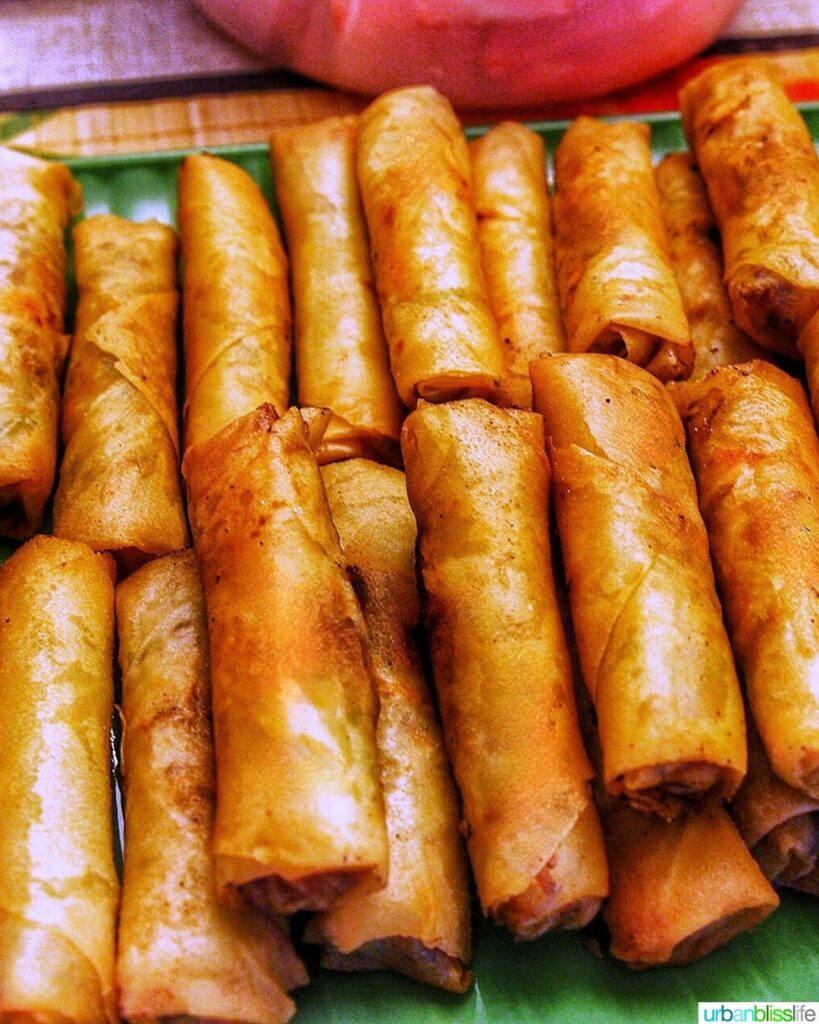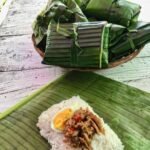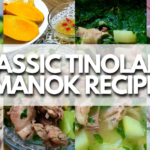The History of Filipino Lumpia, the Iconic Filipino Spring Roll

Lumpia is a popular Filipino dish that has become a staple in Filipino cuisine. It is a type of spring roll that is typically filled with meat, vegetables, or a combination of both, and is often served as an appetizer or snack. Lumpia has a rich history and cultural significance in the Philippines, and is a beloved dish by many Filipinos both in the Philippines and around the world.
The origins of Lumpia
The origins of lumpia are a topic of debate among historians and food experts, with some arguing that it has Chinese roots, while others claim that it is a Filipino invention. The Chinese version of the dish, called “popiah,” is a similar dish that features a soft, thin wrapper and a variety of fillings, including vegetables, meat, and sauces. However, the Filipino version of lumpia is believed to have evolved from a similar dish called “pasingaw,” which was made with pork, garlic, and onions and wrapped in banana leaves.
Despite the debate over its origins, lumpia has become an integral part of both Chinese and Filipino cuisine, with each culture adding its own unique twist to the dish. The Chinese and Filipino versions of lumpia may have similarities in ingredients and preparation, but they differ in the type of wrapper used and the specific ingredients used in the filling.
In the next section, we will explore what lumpia is typically made of and its variations in the Philippines.
What is Filipino lumpia made of?
Lumpia is typically made with a thin, crepe-like wrapper made from flour and water, which is filled with a variety of ingredients. The filling can vary depending on personal preference or regional variations, but common ingredients include:
- Meat (such as ground pork, chicken, or beef)
- Vegetables (such as carrots, cabbage, bean sprouts, and onions)
- Spices and seasonings (such as garlic, soy sauce, and black pepper)
There are also variations of lumpia fillings that can include other ingredients, such as shrimp, tofu, or even cheese. The filling is wrapped tightly in the wrapper, and then fried until crispy and golden brown.
In the Philippines, there are many regional variations of lumpia. For example, the lumpia in the northern part of the country is often made with a thicker wrapper and filled with mung bean sprouts and chopped pork. In the southern part of the Philippines, lumpia is often made with fresh vegetables and shrimp, and is served with a sweet and spicy dipping sauce.
The wrapper also plays an important role in lumpia making. In addition to the traditional flour-based wrapper, there are also wrappers made from rice paper or egg. The type of wrapper used can affect the texture and flavor of the lumpia.


Lumpia in the Philippines
Lumpia is a beloved dish in the Philippines, and is often served at special occasions and gatherings. It is a staple of Filipino cuisine, and is widely available in restaurants and street vendors across the country.
In addition to the regional variations mentioned earlier, there are also other types of lumpia in the Philippines, such as:
- Lumpiang sariwa: a fresh version of lumpia made with fresh veggies and herbs
- Lumpiang shanghai: a smaller pork or beef filled lumpia, often served as a party appetizer
- Turon: a sweet and crispy lumpia with bananas and brown sugar filling.
Lumpia’s popularity in the Philippines can be attributed to its delicious taste and versatility. It can be served as a snack, appetizer, or even as a main dish. It is also relatively easy to make and can be customized to suit different tastes and preferences.
In the next section, we will explore the health benefits and risks of eating lumpia.
Is Filipino lumpia healthy or unhealthy?
While lumpia is a delicious and popular dish, it is important to consider its nutritional value and health benefits.
On the one hand, lumpia can be a good source of protein and fiber, especially if it is filled with lean meats and vegetables. However, the deep-frying process can add extra calories and fat, which can contribute to weight gain and other health issues. To make lumpia healthier, it is recommended to use lean meats and vegetables for the filling, and to bake or air-fry the lumpia instead of deep-frying it.
Using a whole wheat or rice paper wrapper can also be a healthier option compared to traditional flour-based wrappers.
It is also important to enjoy lumpia in moderation, as with any other type of food.
Other popular Filipino dishes
Filipino cuisine is known for its bold and flavorful dishes, and lumpia is just one of many delicious dishes in Filipino cuisine. Other popular Filipino dishes include:
- Adobo: is a savory Filipino dish made by marinating chicken or pork in a mixture of vinegar, soy sauce, garlic, and spices.
- Sinigang: a sour soup made with tamarind or other souring agents, vegetables, and meat
- Kare-kare: a stew made with oxtail, vegetables, and a peanut-based sauce
- Lechon: a whole roasted pig that is often served at special occasions and celebrations
- Pancit: a dish made with noodles, vegetables, and meat or seafood
- Halo-halo: is a famous Filipino dessert that contains shaved ice, sweetened condensed milk, fruits, jellies, and ice cream on top.
Conclusion
In conclusion, lumpia is a delicious and versatile dish that is an important part of Filipino cuisine. While its origins are debated, it is clear that lumpia has become an integral part of Filipino culture and cuisine. With its various regional variations and delicious filling options, lumpia is a dish that can be enjoyed by anyone.
Enjoy lumpia in moderation and try other delicious Filipino dishes too. From savory stews to sweet desserts, Filipino cuisine has something to offer for everyone.










